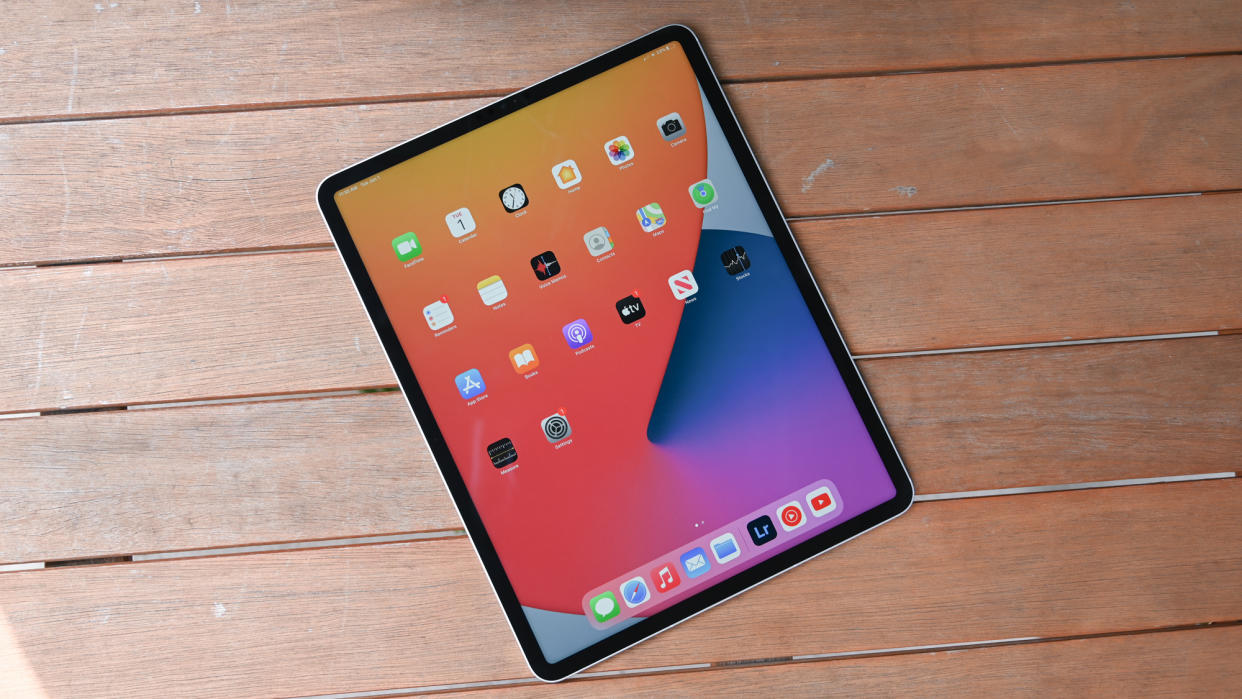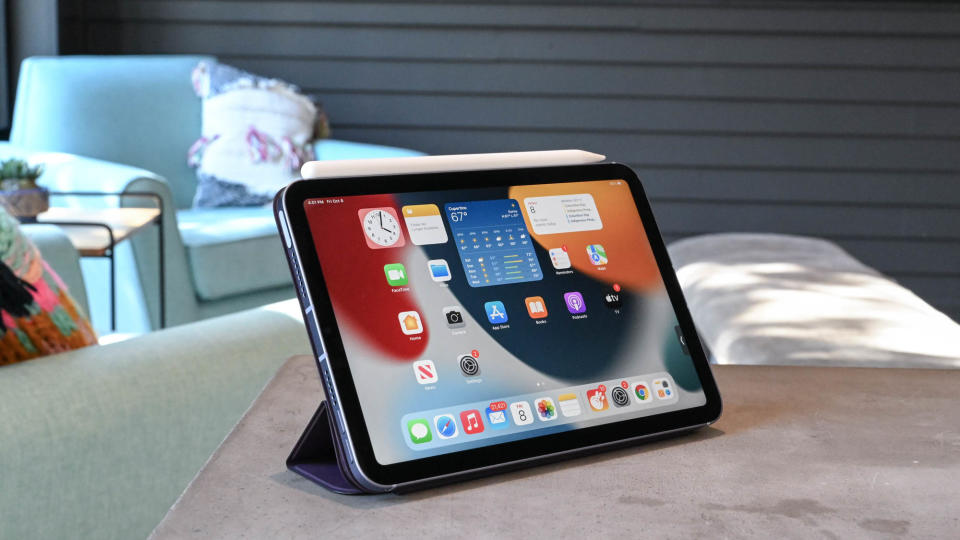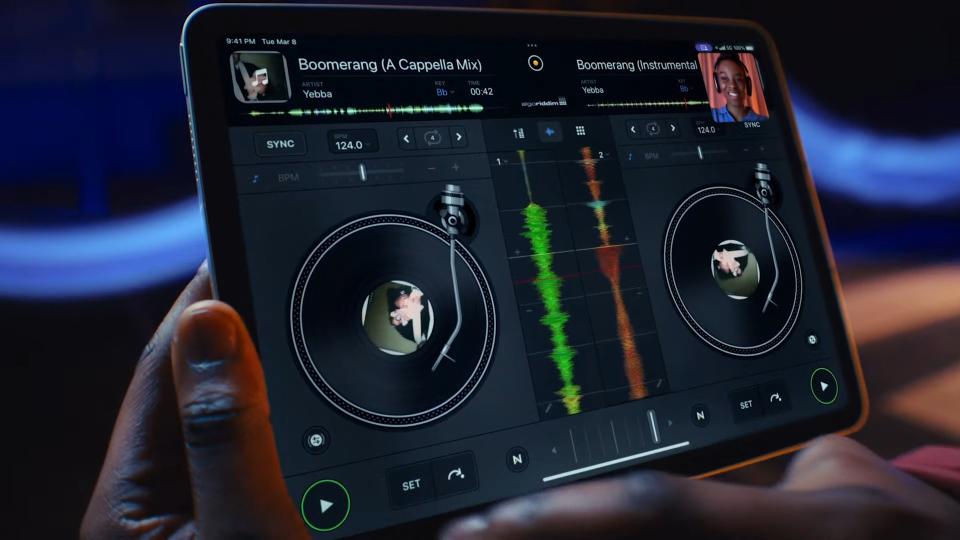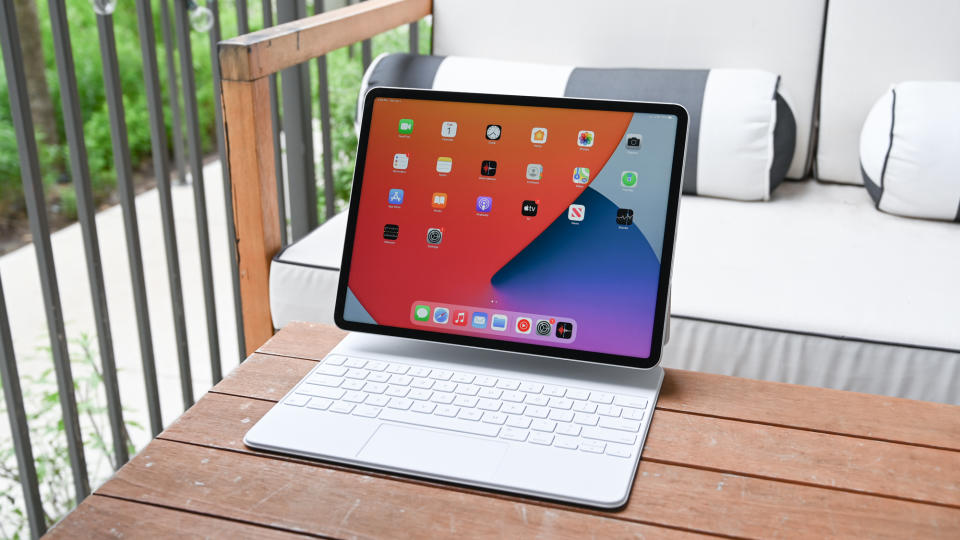iPad vs. iPad Air vs. iPad Pro vs. iPad mini: iPad Buying Guide

With four different iPads covering a variety of sizes and prices ranging from $329 to over $2,000, there are plenty of excellent Apple tablets to choose from. That's a good thing, but how do you decide which iPad is the right fit for you?
Do you just want to watch videos and use a few apps or are you looking for something that can be a laptop replacement or a creative tool? Use our handy iPad buying guide to get the right Apple slate for your needs and budget.
The iPad Air 5 is still arguably the best iPad for most users, bringing the M1 processor and optional 5G in a more affordable package than the iPad Pros. However, the newly announced iPad Pro 2022 or iPad 2022 could tip the scales away from the iPad Air 5, but we'll have to see once we get them in for review. At first blush, the new iPad Pros don't seem like a significant upgrade over the previous models for most users, but the new iPad 2022 may be a spoiler for the Air as it bridges the gap between the base iPad 2021 and the iPad Air 5.
If you're in the market for a new iPad right then you should take a look at the best iPad deals as there are often excellent discounts on the previous models in the wake of a new iPad launch.
iPad Pro vs. iPad Air vs. iPad mini vs. iPad: Compared
The iPad lineup is made up of four families: the iPad Pro, the iPad mini, the iPad Air and the iPad. But as you drill down to the individual models, you'll find plenty of variety in specs, features, and prices. Here's a quick breakdown.
iPad Pro12.9-inch | iPad Pro11-inch | iPad Air (2022) | iPad (2021) | iPad mini (2021) | |
Best For | Laptop Replacement, Professional Artists | Laptop Replacement, Professional Artists | Productivity, Media Consumption, Gaming | Media Consumption, Gaming | Reading, Email, Social Media, Gaming |
Starting Price | $1,099 | $799 | $599 | $329 | $499 |
Screen | 12.9 inches (2732 x 2048), Liquid Retina XDR | 11 inches (2388 x 1688); Liquid Retina | 10.9-inch (2360 x 1640) | 10.2 inches (2160 x 1620) | 8.3 inches Liquid Retina |
Battery Life | 10 hours (rated, web surfing); 9 hours (browsing) | 10 hours (rated, web surfing); 9 hours (browsing) | 10:09 | 11:59 | 10:59 |
Processor | M1 | M1 | M1 | A13 Bionic | A15 |
Storage | 128GB, 256GB, 512GB, 1TB, 2TB | 128GB, 256GB, 512GB, 1TB | 64GB, 256GB | 64GB, 256GB | 64GB, 256GB |
Cameras(Rear / Front) | 12MP and 10MP/7MP front | 12MP and 10MP/7MP | 12MP/7MP | 8MP, 12MP | 12MP, 12MP |
VideoRecording | 4K | 4K | 4K | 1080p | 4K |
Color Options | Silver, Space Gray | Silver, Space Gray | Space Gray, Starlight, Pink, Purple, Blue | Silver, Space Gray | Space Gray, Pink, Purple, Gold |
Touch ID | Face ID | Face ID | Yes | Yes | Yes |
Pencil Supported | Yes | Yes | Yes | Yes | Yes |
Dimensions | 11 x 8.5 x 0.25 inches | 9.7 x 7 x 0.24 inches | 9.7 x 7 x 0.2 inches | 9.8 x 6.8 x 0.3 inches | 7.7 x 5.3 x 0.3 inches |
Weight | 1.5 pounds | 1 pound | 1 pound | 1.1 pounds | 0.7 pounds |
Common Features
All iPads provide access to more than 1 million apps optimized for the big screen, which is far more than what Android or Windows devices offer. You can also expect a high-quality aluminum unibody design and a bright and crisp display.
The tablets all come with iPadOS. As with the iPhone the software support from Apple is second to none and you can expect at least 5-6 years of software updates regardless of which model you select.
Also note that all iPad models can be ordered with 4G LTE or 5G capability, which allows you to get online when you're out of Wi-Fi range. If you're an iPhone user you may want to forgo the added cost for the cellular iPad and the associated plan as the personal hotspot feature works fairly seamlessly, but it's a nice option to have.

iPad (2021)
Best budget tablet
Strong performance
Long battery life
Colorful display
Affordable
Dated design
Simply called the "iPad," this 10.2-inch slate is the most affordable Apple tablet, with a starting price of just $329. Despite its lower price, the iPad has plenty of premium specs, including a 2160 x 1620-pixel Retina display, a speedy A13 Bionic processor, Apple Pencil support and dual 8-MP / 12-MP cameras. It comes in 64GB or 128GB capacity.
This model is actually staying around following the release of the iPad (2022) as the new iPad is making the jump to a $449 starting price. Now it earns it with a bump to a 10.9-inch display, an A14 Bionic processor, improved cameras, a USB-C port, and a more modern design that eliminates the home button, but the iPad (2021) is going to remain a strong affordable option.
Best For: Because of its relatively low price and generous screen size, the iPad is a great choice for media consumption, gaming, social media and some light productivity. Although the iPad mini 4 is a better size for small hands, many parents will prefer the iPad's lower price when choosing a slate for their kids. College students on a budget will also find this model appealing.
See our iPad (2021) coverage

iPad mini
Best small tablet
Compact size enables single-handed use
Fast performance from A15 Bionic
Sharp and bright display
Decent battery life and USB-C charging
Excellent camera upgrades
Magic Keyboard isn't supported
Apple Pencil Gen 2 sold separately
Small display can feel cramped
64GB of storage
Expensive
The more portable, purse-friendly tablet in the iPad family, the iPad mini is a great handheld device. It features an 8.3-inch display and an A15 chip.
Best For: If you like to read on the couch, in bed, or on the go, the iPad mini is a great size for books, especially comic books. Its relatively small screen makes it easy to type quick social media posts or send off emails, during one-handed use or while standing up. The mini is the best size for kids, but parents may prefer to get the less-expensive iPad.
See our full iPad mini (2021) review

iPad Air (2022)
Best for most people
Sleek design with thin bezels
M1 chip delivers excellent performance
Good battery life
Loud, clear speakers
Support for Apple Pencil 2 and Magic Keyboard but...
Accessories are expensive add-ons
No Face ID or headphone jack
64GB base storage
Display could be brighter, more vivid
This $599 iPad Air looks to provide the best mix of pro and consumer features at a price that won't hurt too much. With support for the current Apple Pencil and Magic Keyboard, it can be your next 2-in-1, acting as a laptop when you need to be productive.
The biggest differences between it and the entry-level $329 iPad are its larger 10.9-inch screen and blistering fast M1 processor. It also mirrors the iPad Pro with USB-C charging and while it would have been nice to get Face ID, the fingerprint sensor is fast and moving it to the side button gives the Air thinner display bezels and a more modern iPad Pro design.
Best For: Overall, the iPad Air is a great option for most people who aren't on such a tight budget but don't need the niche features that make the iPad Pro so expensive. The only reason to consider the upgrade to a Pro now that the Air also features the M1 processor, are the superior cameras, Face ID, and the larger 120Hz displays.
See our iPad Air (2020) review

iPad Pro (11-inch)
Best for on-the-go professionals
Stellar performance
Intuitive and useful trackpad support
Vivid and super bright display
Expensive (especially with accessories)
This is what happens when you take the 10.5-inch iPad Pro, increase its screen, shrink its bezels and swap its home button out for Face ID. Oh, and then there's the Ferrari engine under the hood: Apple's unbelievable M1 processor still flies in the 2021 iPad Pros.
The iPad Pro 2021 is for the same crowd as the previous models: those without a budget who want the absolute best tablet on the market, as well as professionals and enthusiasts using intensive apps for content creation or editing. Unless Apple changes direction and turns the iPad Pro into a true laptop replacement, the market for this tablet will remain limited.
The iPad Pro (2022) adds a faster M2 processor and Wi-Fi 6E support in both models, but those are the only significant upgrades, so if you can find a good deal on an iPad Pro 2021 then you shouldn't be worried that you are missing out on much. Most users will never touch the upward limit of even the M1-powered iPad Pros performance.
Best For: Creative pros who love their styluses, want a smaller device and push their iPad to the limits. Also, pros on a budget will go for this model, as it's just as fast and capable, but starts at $200 less and its $179 Smart Keyboard Folio is $20 less than the 12.9-inch iPad Pro's keyboard cover.

iPad Pro (2021, 12.9-inch)
Best as a tablet/laptop hybrid
XDR display can get bright and vivid
M1 chip is outrageously fast
Slim, durable chassis
Thunderbolt 3 and USB4 support
Improved front-facing camera with Center Stage
5G wireless speeds
Display has some limitations
iPadOS can feel restricting
Expensive
If you think bigger is better, the 12.9-inch iPad Pro is the best. Not only does it have the speedy M1 that the 11-inch iPad Pro offers, but its 2732 x 2048-pixel mini-LED edge-to-edge panel is the largest digital canvas that apple offers. But that size doesn't ruin its portability, as it's a mere 0.4 pounds heavier than the 11-inch iPad Pro and only slightly thicker at 0.25 inches compared to 0.23 inches.
And about that M1 processor, our tests showed that the new iPad Pro is faster at image editing than actual laptops. And with 10+ hours of battery life, it also outlasts most PCs.
The 2nd Generation Apple Pencil (sold separately for $129) packs gesture-based tricks in its barrel and a charging method that won't feel like you're breaking it, while the Magic Keyboard turns the iPad Pro into a laptop.
Best For: Those demanding creative pros who want the best iPad experience possible. Not only is it super-fast, but its larger screen — both in inches and pixels — provides the largest canvas for professional artists and video editors to do their work.
See our 12.9-inch iPad Pro (2021) review

